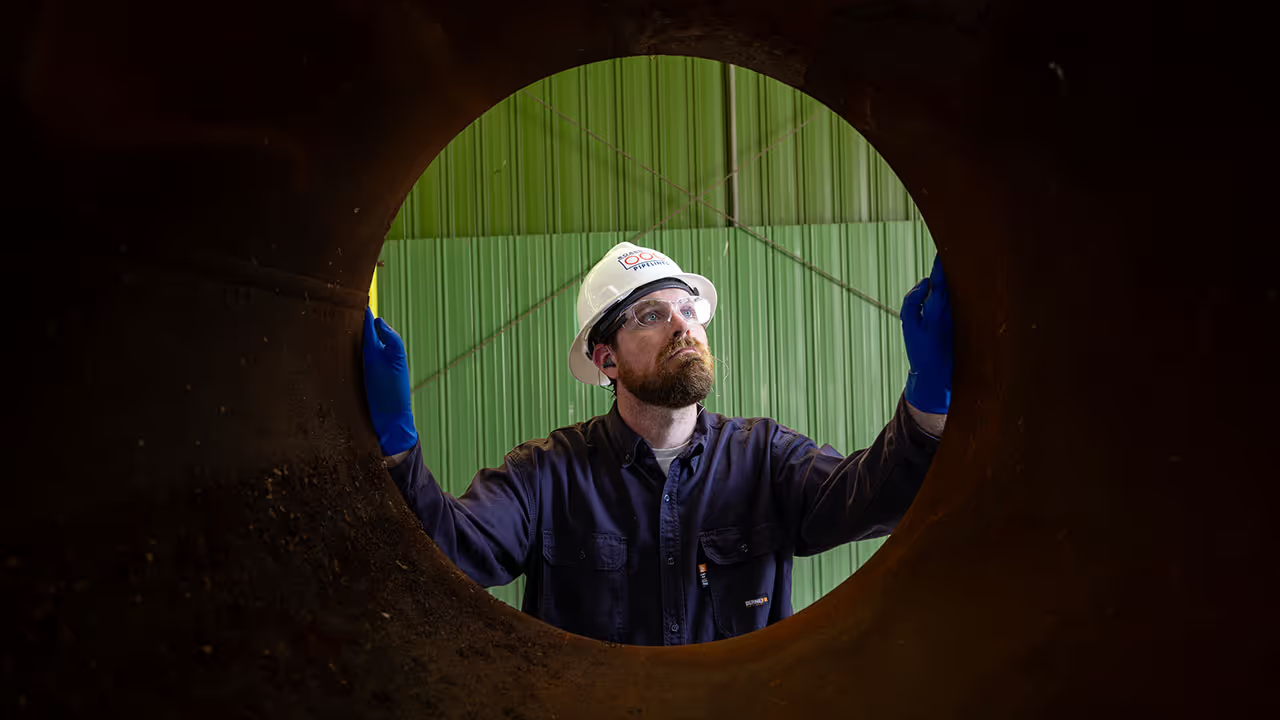
Texas Gas Transmission, LLC
Project safety

We seek to ensure project facilities are designed, constructed and operated safely by appropriately trained employees and are in compliance with all applicable federal, state and local rules and regulations.
Design and construction
Our pipeline system is designed and built in accordance with the pipeline safety standards established by industry experts and the Department of Transportation (DOT). Safety measures include:
Design: Modern technologies and materials are used to support builiding safety into the Project from the start.
Construction: The pipeline facilities are monitored by qualified inspectors during construction to meet quality standards and comply with applicable codes and standards.
Welding: Welders on the Project are required to pass qualification tests. Welds on the piping are subject to visual and non-destructive tests before the facility is placed into operation.
Strength Testing: Before being placed into operation, the pipeline and station piping will be hydrostatically tested (pressurizing a pipeline with water to a level that exceeds the stress at which the pipeline will operate). This procedure is intended to confirm the strength and integrity of the pipe before being placed into service.
Environmental protection during construction
Before construction begins, construction personnel will receive environmental training focused on their responsibilities. Construction activities will comply with the requirements and provisions of the environmental permits issued for the project, including the requirements of the FERC's Upland Erosion Control, Revegetation and Maintenance Plan (Plan) and Wetland and Waterbody Construction and Mitigation Procedures (Procedures). We will employ environmental inspectors separate from the construction crew and contractors to oversee and monitor adherence to environmental requirements. These environmental inspectors will have the ability to recommend a construction shutdown if necessary, to maintain environmental compliance.
Safety systems and monitoring at compressor stations
Safety systems will be installed at compressor stations, including Emergency Shutdown Systems. While the facilities are in operation, employees will monitor the flow of gas and equipment 24 hours a day, 365 days a year using a specialized computer system. This system gathers pipeline pressure data, volume, flow rates, and the status of pumping equipment and valves. An alarm warns the operator on duty whenever conditions change, and the condition is investigated. Both automated and manual valves are strategically placed along the pipeline system to enable the pipeline to be shut down immediately and sections to be isolated quickly, if necessary, allowing operators to respond quickly to operational events.
Inspections
Periodic inspections of the facilities will help us detect and address potential issues. Inspections include surveys for detecting signs of leaks or other flaws. Visual inspections of the pipeline right-of-way (ROW) are conducted regularly by air or ground, or both. The ROW is a designated corridor where a pipeline is installed and maintained. Because it often crosses private property, operating within it requires mutual respect and open communication with landowners. Above-ground marker signs are displayed along the ROW to alert the public and contractors to the pipeline's existence.
Operator qualifications program
All operation and maintenance personnel must meet industry qualification standards. Our operators are trained and capable of performing safety and maintenance tasks, recognizing abnormal operating conditions and responding to those conditions.
Public awareness program
Our public awareness program is designed to prevent third-party damage to our pipelines. Residents and business owners who live along the pipeline ROW are mailed safety brochures about pipeline proximity and markers. Additionally, we are a member of numerous One-Call Centers that serve as clearinghouses for excavation activities close to pipelines and other underground utilities. A national "call-before-you-dig" number - 811 - was established by federal law in 2007. Emergency preparedness and planning measures are maintained to help address potential pipeline incidents. We also conduct emergency response drills and work closely with local first responders to support emergency preparedness.
